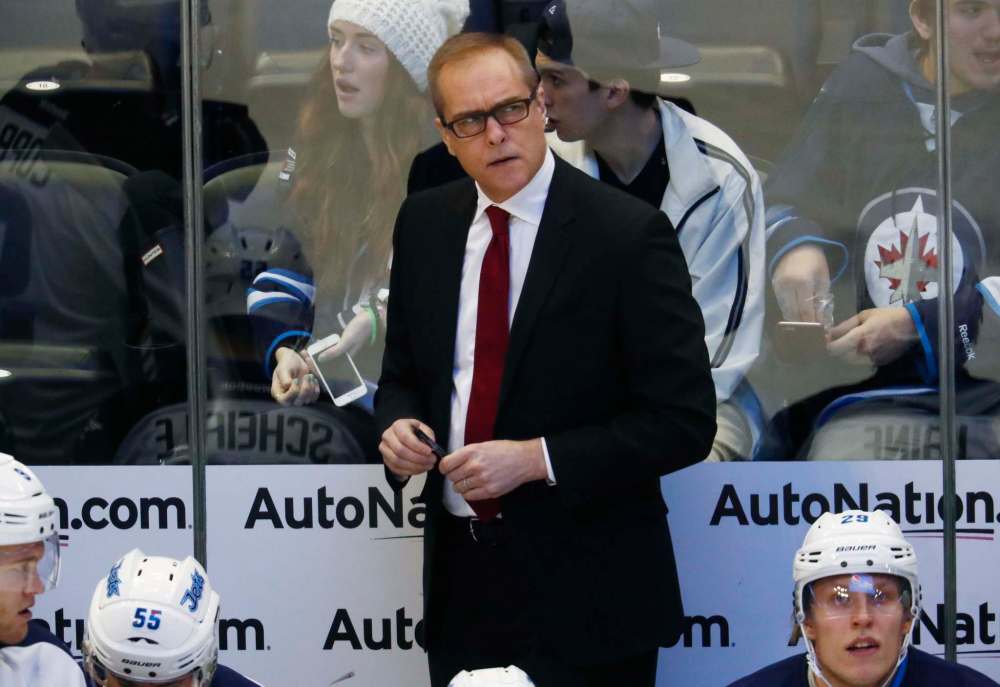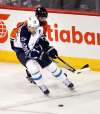Analytics, dressing-room culture keys to Jets’ future
Advertisement
Read this article for free:
or
Already have an account? Log in here »
To continue reading, please subscribe:
Monthly Digital Subscription
$0 for the first 4 weeks*
- Enjoy unlimited reading on winnipegfreepress.com
- Read the E-Edition, our digital replica newspaper
- Access News Break, our award-winning app
- Play interactive puzzles
*No charge for 4 weeks then price increases to the regular rate of $19.00 plus GST every four weeks. Offer available to new and qualified returning subscribers only. Cancel any time.
Monthly Digital Subscription
$4.75/week*
- Enjoy unlimited reading on winnipegfreepress.com
- Read the E-Edition, our digital replica newspaper
- Access News Break, our award-winning app
- Play interactive puzzles
*Billed as $19 plus GST every four weeks. Cancel any time.
To continue reading, please subscribe:
Add Free Press access to your Brandon Sun subscription for only an additional
$1 for the first 4 weeks*
*Your next subscription payment will increase by $1.00 and you will be charged $16.99 plus GST for four weeks. After four weeks, your payment will increase to $23.99 plus GST every four weeks.
Read unlimited articles for free today:
or
Already have an account? Log in here »
Hey there, time traveller!
This article was published 30/03/2017 (3140 days ago), so information in it may no longer be current.
As the Winnipeg Jets’ season winds down, let’s take a look at a couple of things I think might affect the team moving forward.
The culture in a dressing room is often bandied about, so I’ll take a look at how that can impact future success. I’ll also take a peek at the analysis of advanced statistics and their role.
My interest in hockey analytics started in 2013 and it didn’t take me long to find Jets fans on Twitter arguing about the usefulness of them. But it was the analytics crew that caught my attention when they expressed their displeasure with the plus-minus statistic as a viable measure of a player’s worth.

I was in total agreement, so they had my attention on their other work.
As to the plus-minus stat, last week Mathieu Perreault and head coach Paul Maurice were defending his minus-10.
“Sometimes, bad changes happen to me, where a guy comes to the bench, I step on and I don’t even have the time to take two or three strides and it’s in the back of the net, so I take another minus. It shows up in the stats and it kind of sucks,” Perreault said.
Maurice added, “He’s got his point coverage and somebody else makes a mistake, where the plus-minus gets skewed a little bit in terms of his impact on it.”
Both true — but I’d have laughed it all off if I were them, as it’s always been a poor stat.
In the Jets’ 1.0 inaugural National Hockey League season in 1979-80, we had a team that was destroyed by vindictive NHL owners who tore apart our World Hockey Association championship team.
I was minus-39, played a lot and had a decent season. To give some context, the great Lars-Erik Sjoberg was minus-35 and there were others who were worse.
The next year, I was the only player on the team on the positive side of the ledger (plus-three), while the NHL’s first-overall draft pick, teammate Dave Babych, was a minus-61. I was hurt and played only 14 games, while Babych went on to a great career.
Some players were even known for stepping off the ice while backchecking, suddenly needing a change when a scoring chance against was about to happen.
The list is long as to other situational reasons for my — and many others’ — distaste for the plus-minus stat.
Analytics started for me with Corsi (shot attempts for versus shot attempts against — including missed and blocked shots, along with shots on goal). It has progressed over four years into a plethora of options, moving forward as more data is accumulated and more predictive behaviour is considered.
Companies specializing in tracking by using deep video analysis are now competing in this space, but their work is usually sold to teams, so it’s not available publicly. NHL teams have hired numerous data analysts who’ve taken their work offline and the same goes for the ones who have formed consulting companies. Still, there is lots of excellent public work out there.
For me, it’s a useful tool when evaluating teams and players, particularly when I don’t see a team play a lot. I find these stats line up with what I’ve seen, most of the time, when I’m watching a team play every game (such as the Jets).
Sometimes something in the stats doesn’t seem right (compared to what I’ve seen), so I’ll take a closer look at it. This has enhanced the enjoyment of the game for me, but I respect that a lot of people just want to watch, enjoy the game and go with what they saw.
Now let’s have a look at the culture in a dressing room. No two teams are identical, but getting the right mix in there is vitally important.
Stefan Wolejszo, who was born and raised in Winnipeg during the Jets’ 1.0 era, writes about “intangibles” in hockey. In his recent article on cohesion, Wolejszo argued that while many NHL teams have what they call “glue guys,” they often don’t choose the right ones.
There’s the socially apt player who gets along well at that level (the good-at-a-party guy), then there’s the one who is valuable because he follows the coach’s systems and direction, but is not trying to be everyone’s friend.
To me, the social butterfly is useless if he can’t contribute to winning in an on-ice way. He’s the bad “glue guy,” yet some teams still find room for them.
If he keeps the guys loose in the dressing room, then replace him with a monkey that performs tricks and bring in a competent NHL player.
The decent-to-good players who are committed to systems and coaches are the only ones that should be in the dressing room in today’s game.
We hear from Maurice that he’s got a group where the young players love the older ones and vice-versa. It makes me wonder if there’s too much “social love” and not enough players who embrace his systems. This season has seen the Jets struggle mightily with some of them.
When Jets management gets down to player performance reviews this summer, the commitment to systems and coaches must be a big part of the evaluation process. If players either aren’t willing, or aren’t capable of doing their jobs within the team structure, they must be replaced.
The same goes for players who don’t pass the analytics and eye test.
Only then will they have a chance at enjoying a long-standing, winning culture.
Opportunity knocks this summer — will the Jets answer the door?
Chosen ninth overall by the NHL’s St. Louis Blues and first overall by the WHA’s Houston Aeros in 1977, Scott Campbell has now been drafted by the Winnipeg Free Press to play a new style of game.
Twitter: @NHL_Campbell
History
Updated on Friday, March 31, 2017 8:03 AM CDT: Edited








